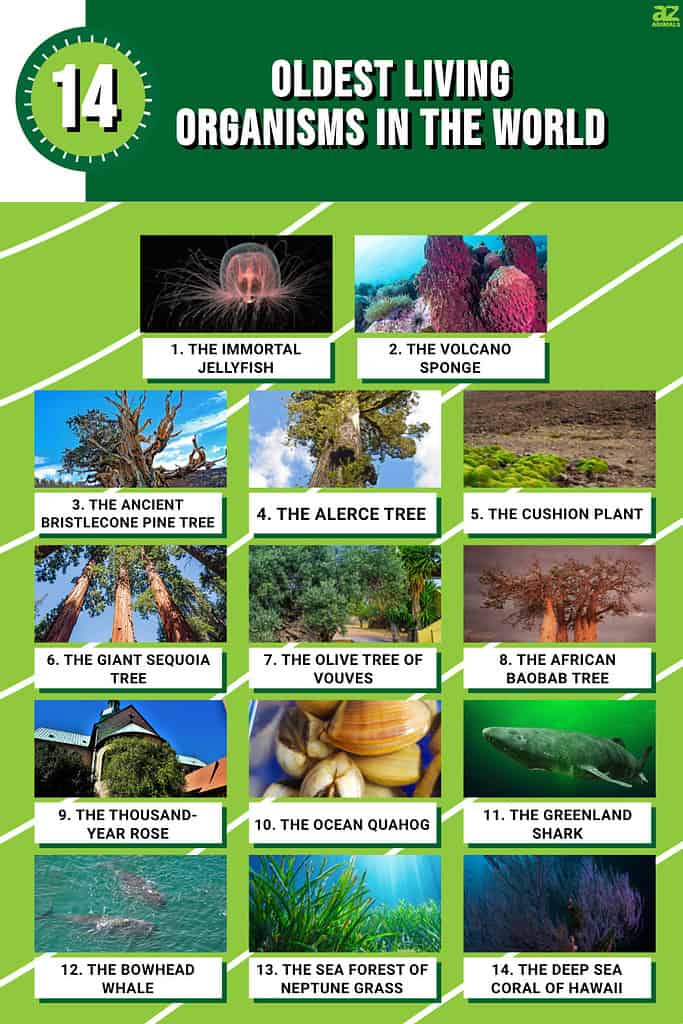
The oldest living organisms in the world are fascinating! From ancient species of trees to sharks that live for hundreds of years, these organisms survive countless natural disasters, climate changes, and human intervention. With their incredible longevity, these organisms offer a glimpse into the past that help us better understand our current environment. Here are some of the oldest living organisms in the world and their unique stories.
The Immortal Jellyfish
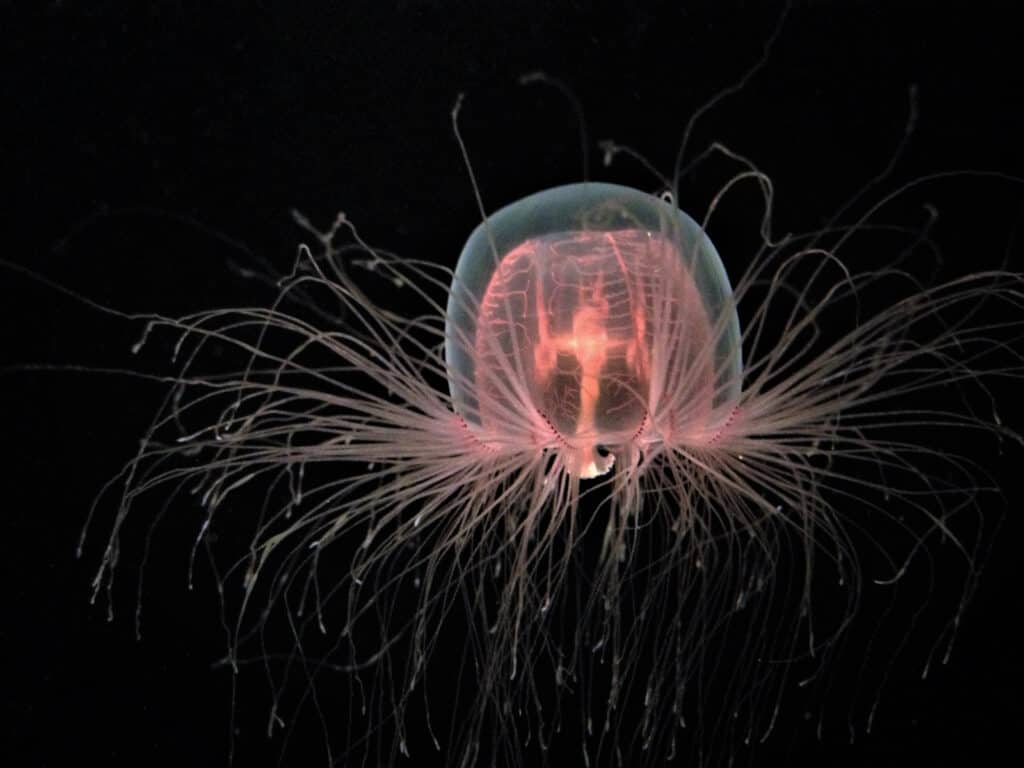
Immortal
jellyfish
live throughout the world’s tropical oceans and temperate seas.
©Rebecca Schreiner/Shutterstock.com
The Turritopsis dohrnii, or immortal jellyfish, is a tiny jellyfish believed to be the only species on Earth with the ability to revert to its juvenile stage when stressed or injured. This process allows this organism the possibility of living forever. Yes, you read that right. There are likely jellyfish swimming in the ocean that have been around since the age of dinosaurs! However, their unique ability to revert to a younger age (called transdifferentiation) still needs to be fully understood.
These jellyfish live throughout the world’s tropical oceans and temperate seas. Despite their petite size (18 inches), immortal jellyfish might always be one of the oldest living organisms in the world.
The Volcano Sponge
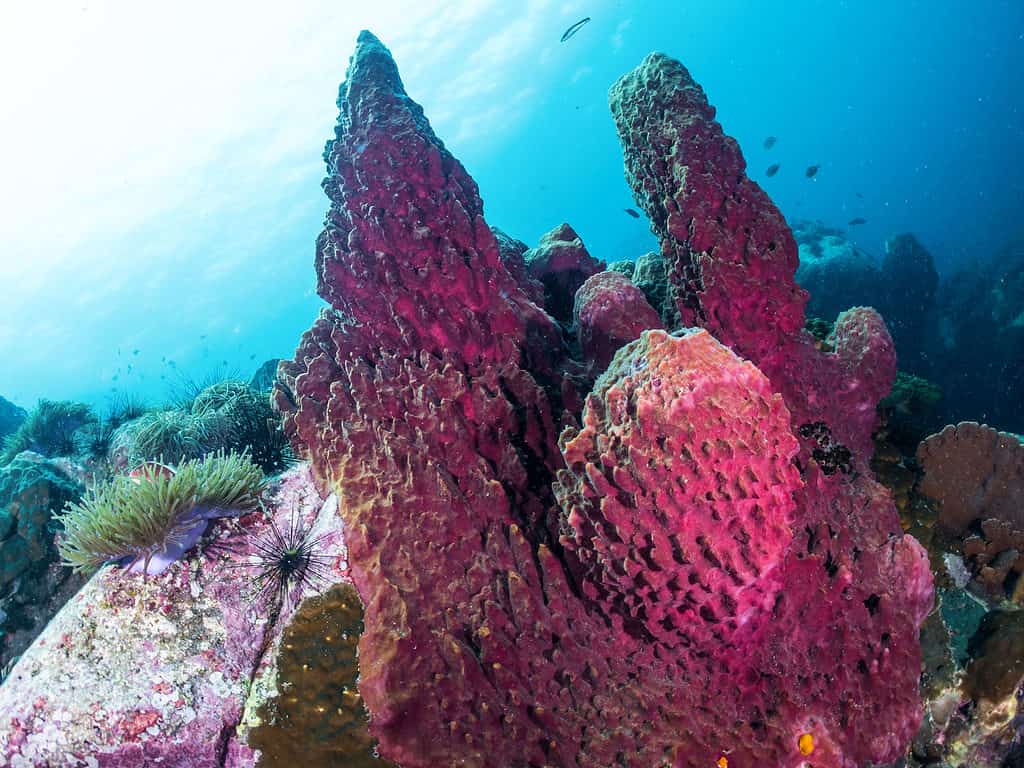
Volcano sponges are very large, and they can grow nearly 5 feet in diameter.
©Bangtalay/Shutterstock.com
The volcano sponge is an ancient species of deep-sea sponge found in some of the ocean’s most extreme and remote parts. These pear-shaped sponges are over 15,000 years old! They live on hydrothermal vents on the sea floor, heated by undersea volcanic activity.
Volcano sponges are also very large, and they can grow nearly 5 feet in diameter. In addition, volcano sponges survive life at sea depths between 50-470 feet below the water’s surface. That, plus living in complete darkness for thousands of years, makes these oldest living organisms pretty miraculous.
3. The Ancient Bristlecone Pine Tree
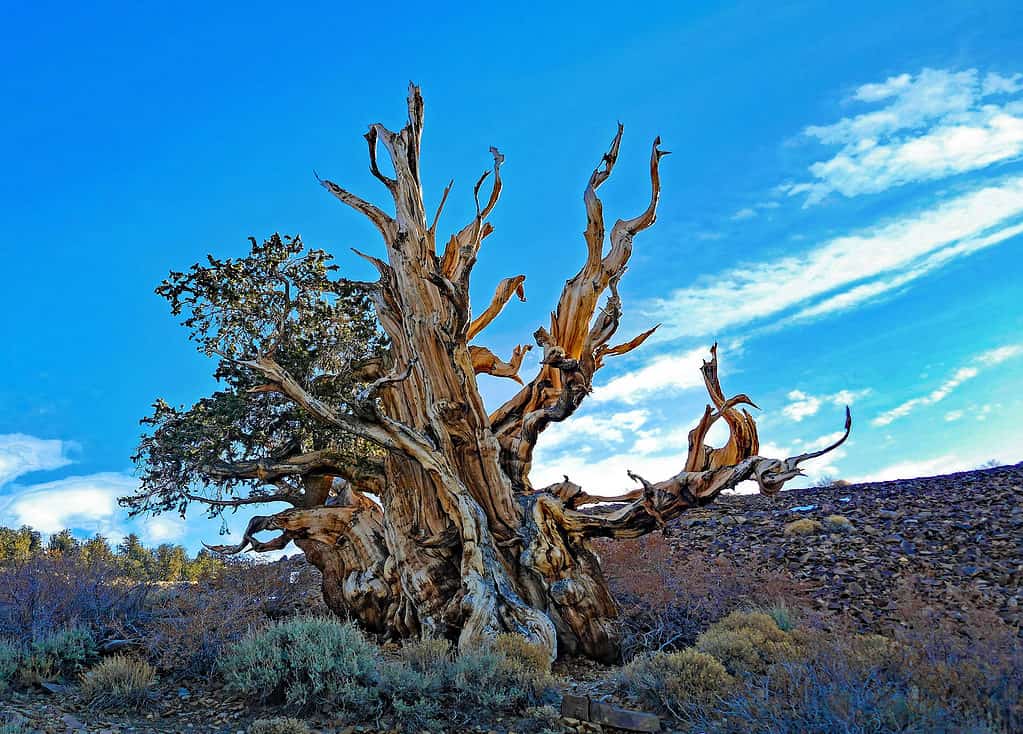
The ancient bristlecone pine tree is thought to be around 5,000 years old.
©dlhca/Shutterstock.com
This incredible tree is thought to be around 5,000 years old and is native to California’s White Mountains. It has survived in the harsh conditions of its environment for so long due in part to its dense wood that’s rot and drought-resistant. This evergreen tree grows in the high altitudes and mountainous regions of California, Colorado, Nevada, Utah, and Arizona. Its twisted branches have a unique combination of short needles and long bristles.
The oldest living bristlecone pine is named Methuselah and is over 4,800 years old. It stands an impressive 135 feet tall and is the oldest known living tree in the world. Methuselah’s location is a closely guarded secret to protect the tree from damage and vandalism.
4. The Alerce Tree
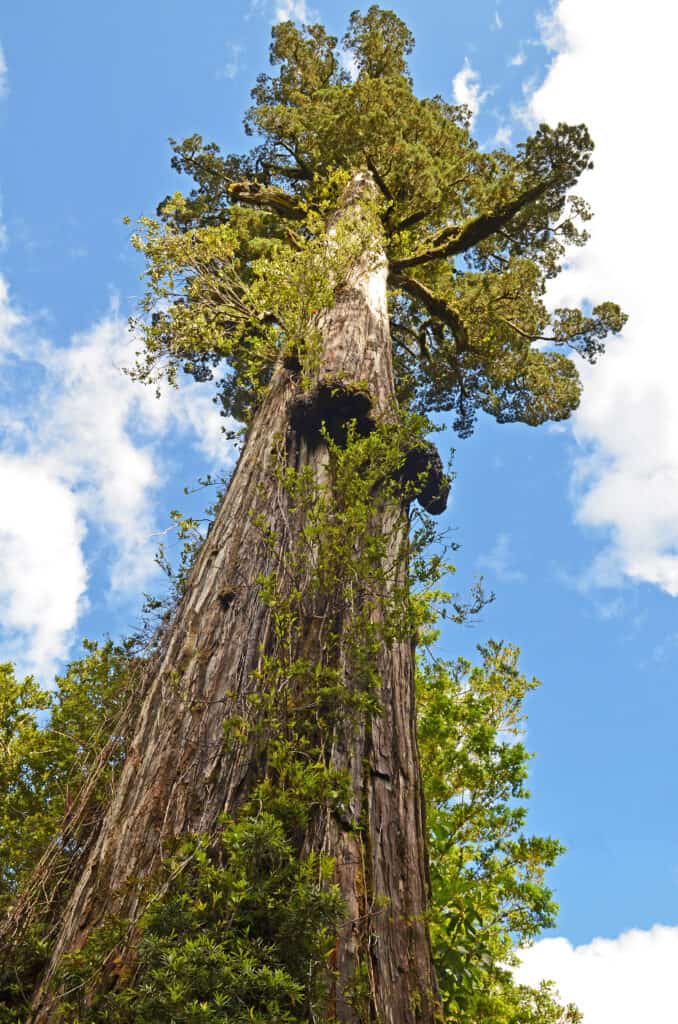
Alerce trees can grow nearly 200 feet tall.
©Mystic Stock Photography/Shutterstock.com
The Alerce tree (Fitzroya cupressoides) is an ancient species of coniferous trees native to the temperate rainforests of Patagonia, Chile, and Argentina. It’s believed to have some specimens over 3,600 years old, and rightfully claiming the title of one of the oldest living organisms in the world.
Alerce trees can grow nearly 200 feet tall, and they have thick trunks that often measure more than 10 feet in diameter. In addition, this tree is also known as a living fossil since its ancestry is traceable by more than 150 million years.
These trees look like giant redwoods but with unique features like bark that sheds in thick plates and long cones.
5. The Cushion Plant
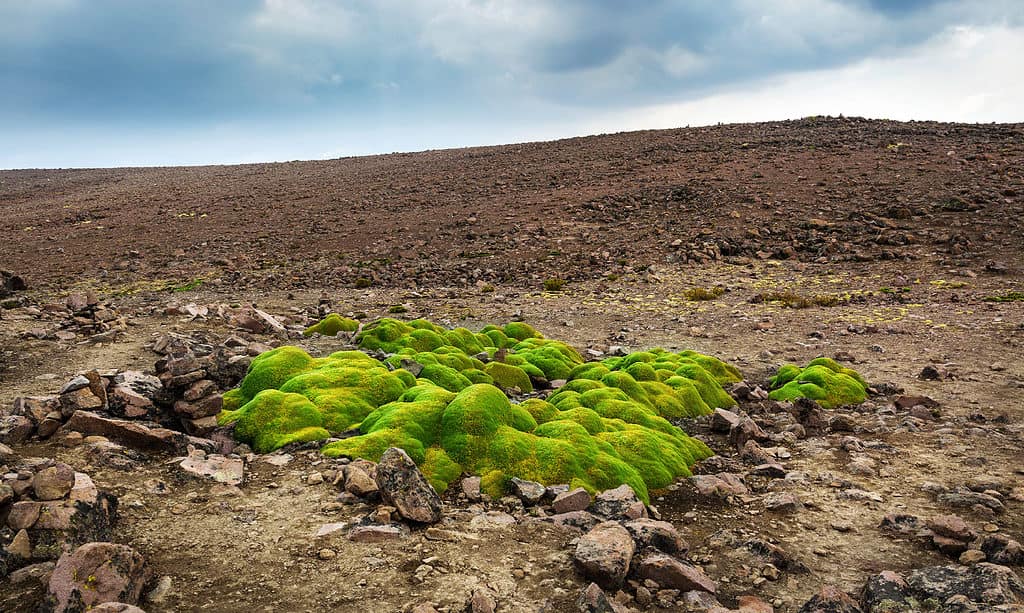
The cushion-shaped yareta’s deep root system enables it to survive periods of drought.
©iStock.com/terex
The age-old yareta is a cushion-forming plant that grows in the South American Andes. These bright and lump-shaped plants are around 3,000 years old! Moreover, yareta is a symbol of resilience for the locals who rely on its existence for firewood, medicinal uses, and wool.
Yareta’s slow-growing, evergreen foliage spreads along the high mountain areas of Peru and Bolivia. Its waxy leaves help protect it from the extreme temperatures and harsh winds of its environment.
In addition, the cushion-shaped yareta’s deep root system enables it to survive periods of drought.
6. The Giant Sequoia Tree
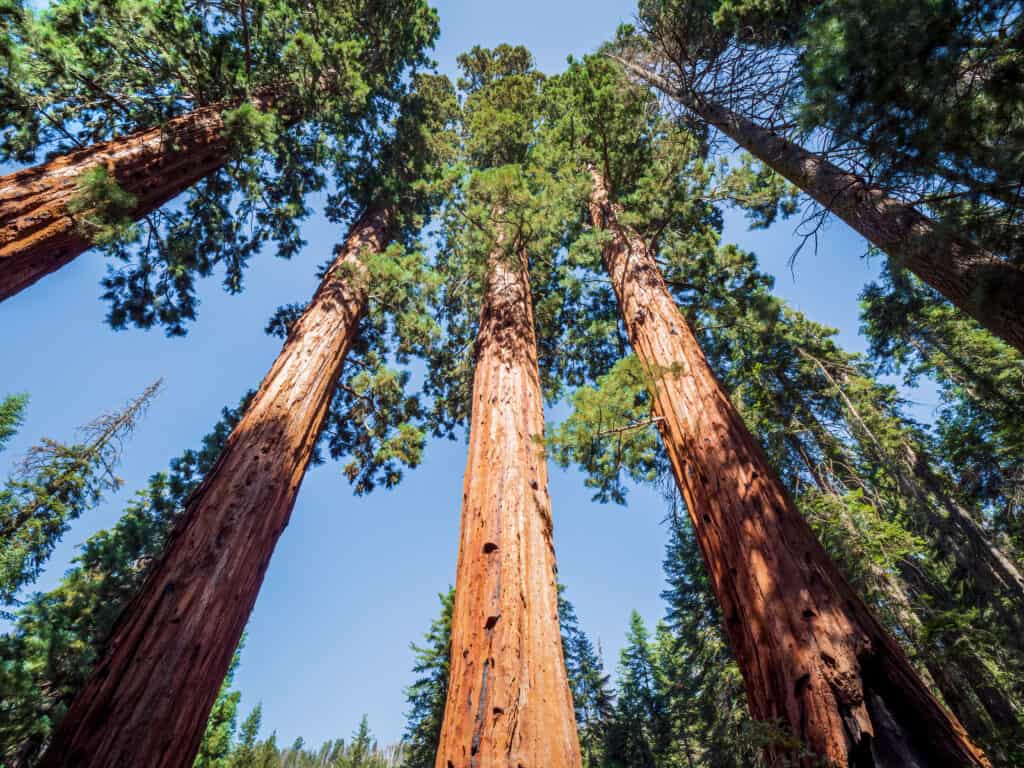
The giant sequoia is the only extant species in the
Sequoiadendrongenus.
©arkanto/Shutterstock.com
Giant sequoia trees are as majestic as they come. These massive redwood trees are around 3,200 years old, making them one of the oldest living species on Earth. The giant sequoia is native to California and can reach heights of up to 300 feet, making this redwood the tallest tree species in the world. In addition, giant sequoias are incredibly fire-resistant unless fire moves up the trees and burns their crowns.
You’ll recognize a giant sequoia tree by its enormous trunk and wide canopy, made of needle-like leaves. Its rusty-brown bark is thick, dark, and fibrous, protecting against natural disasters like fire or insects. As a result, it’s an incredibly resilient species, and its size allows it to store large amounts of carbon dioxide, helping reduce the impact of climate change.
Unfortunately, giant sequoia trees are an endangered species because of the destruction of their habitat. There are only about 80,000 living trees left. So, we must take steps to protect this and more oldest living organisms worldwide.
7. The Olive Tree of Vouves
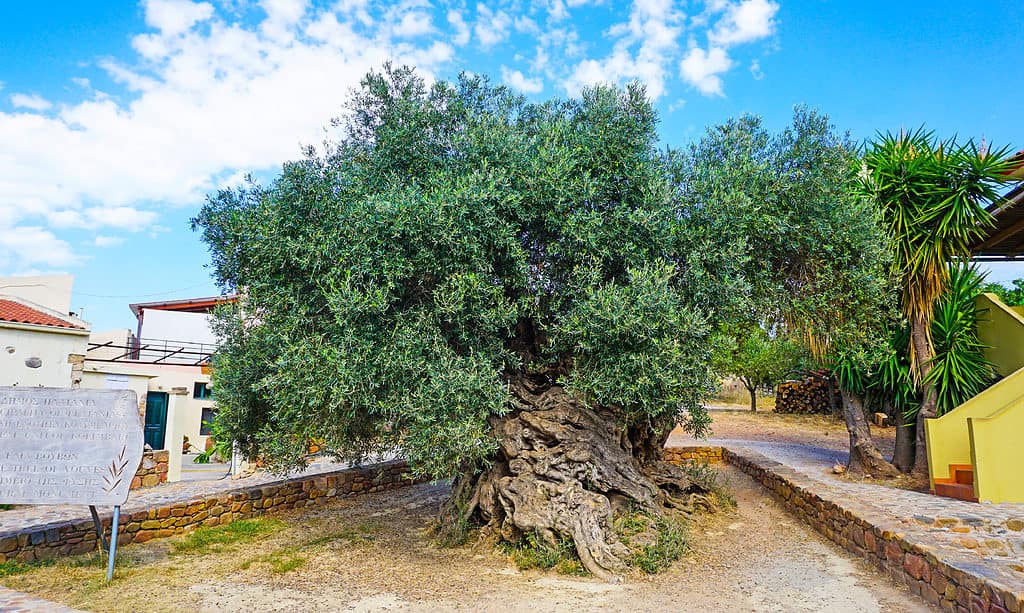
The olive tree of Vouves has likely been alive for 2,000-4,000 years.
©iStock.com/tm_zml
The olive tree of Vouves has likely been alive for 2,000-4,000 years. It stands about 27 feet tall, and its impressive twisted trunk is 15 feet in diameter. Moreover, this ancient olive tree still produces olives today! The olive tree of Vouves is located on the Greek Island of Crete and is one of the oldest living olive trees worldwide.
This beloved tree is an iconic symbol for Greeks and a tourist attraction for visitors from across the planet. In addition, it’s been a food, medicine, and wood source since ancient times.
8. The African Baobab Tree
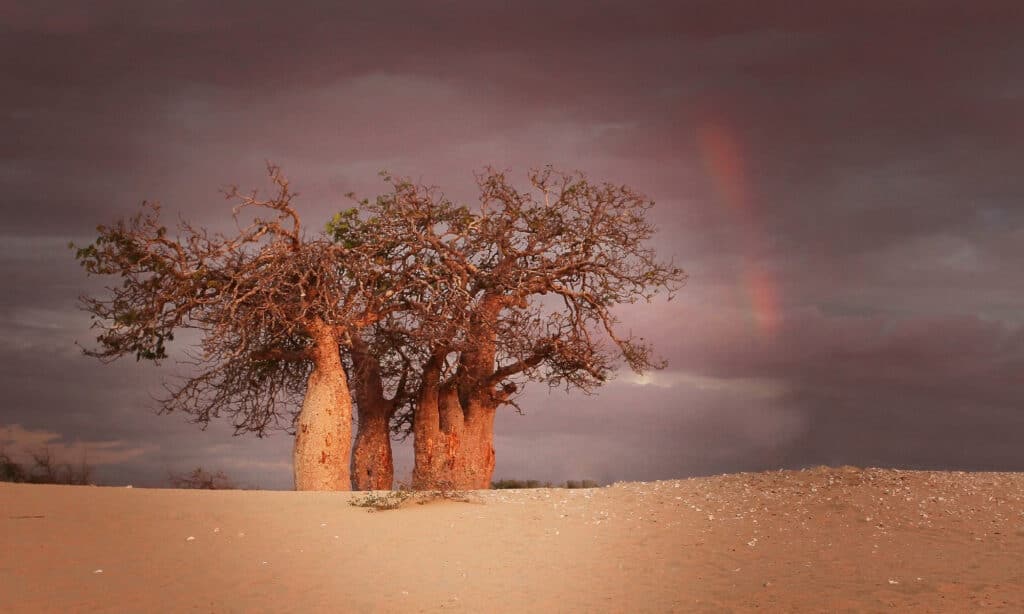
The African baobab tree has an average lifespan of 1,500-2,000 years.
©iStock.com/gydyt0jas
As the oldest living flowering plant, the African baobab tree has an average lifespan of 1,500-2,000 years. Native to Africa, this giant tree has a huge trunk reaching up to 30 feet in diameter. In addition, this iconic tree has branches that resemble an intricate root system and vast, swollen-looking trunks.
The African baobab tree is incredibly resilient. It can withstand extreme weather conditions and prolonged periods without water. However, baobab trees are endangered due to deforestation and climate change. Conservation efforts help protect this ancient species and ensure its survival.
9. The Thousand-Year Rose
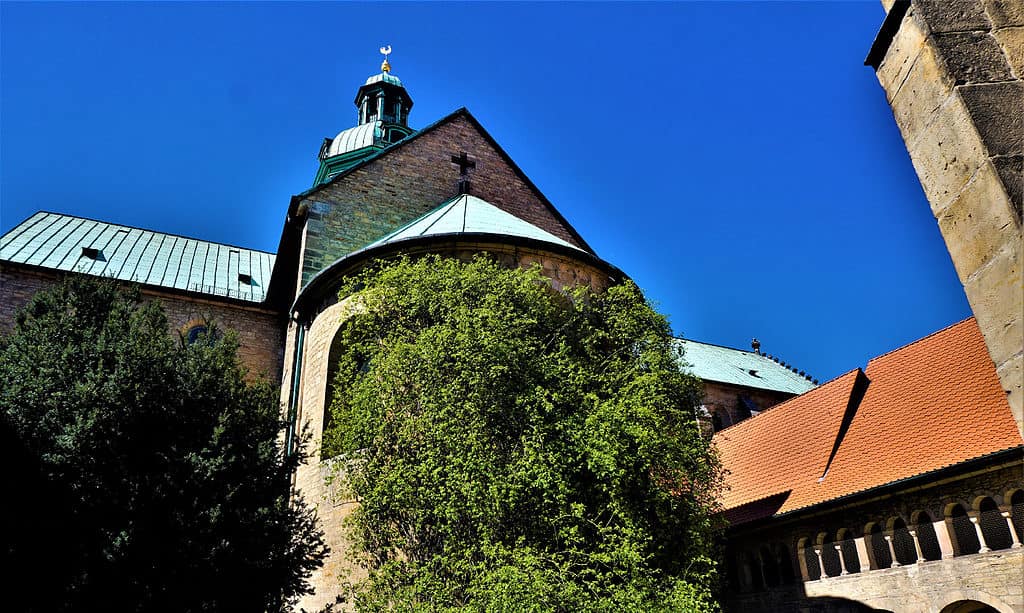
The thousand-year rose is around 1,200 years old.
©iStock.com/pisces2386
Growing strong at a Catholic cathedral in Germany, the thousand-year rose is around 1200 years old. Also called the Rose of Hildesheim, this rose bush was probably planted when the church was constructed in the early 800s. Every bloom season, it climbs about 20 feet up an apse of Hildesheim Cathedral, producing hundreds of light pink roses. In addition, as legend has it, this rose bush has bloomed every year of its very long life.
10. The Ocean Quahog
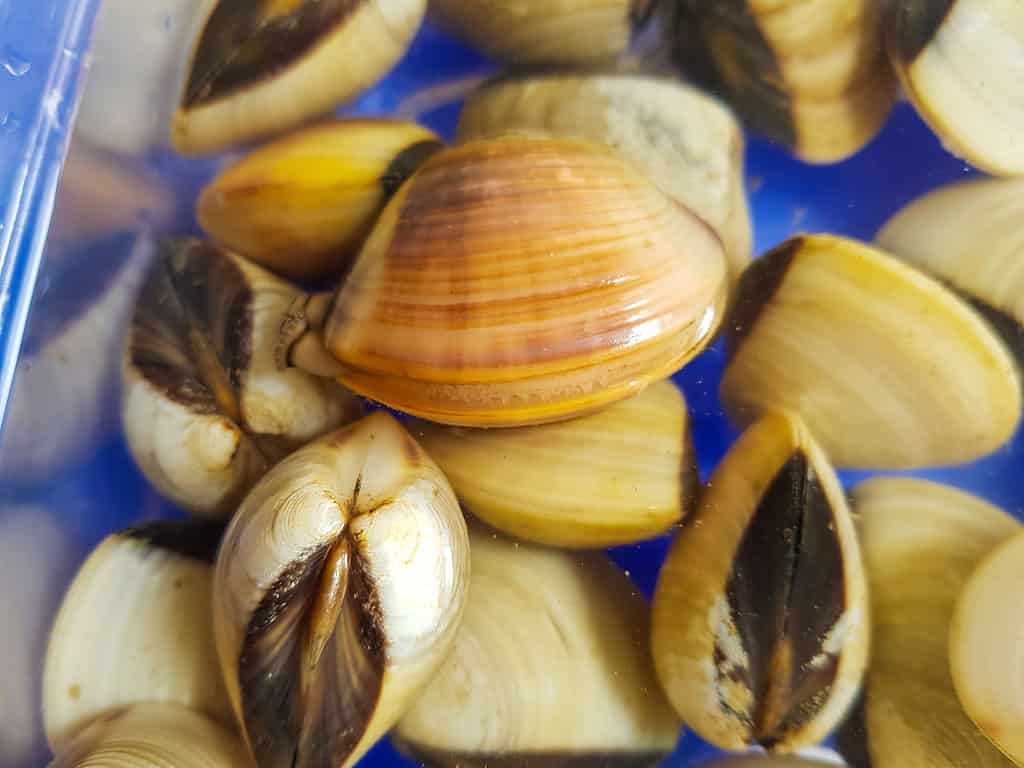
The ocean quahog is thought to be around 400-500 years old.
©Lam Van Linh/Shutterstock.com
Also known as the “Arctica Islandica” or “black clam,” this species of edible clam is thought to be around 400-500 years old. However, the oldest living ocean quahog on record, called Ming the clam, lived to be 507 years old! The ocean quahog lives in the North Atlantic Ocean and fascinates scientists with its immense longevity. Additionally, its thick shell provides protection from predators. At the same time, its unique ability to store energy allows it to survive long periods of extreme cold and darkness.
Like many of the oldest living organisms in the world, the ocean quahog owes much of its long lifespan to very slow growth, durable structure, and resilience in challenging conditions.
11. The Greenland Shark
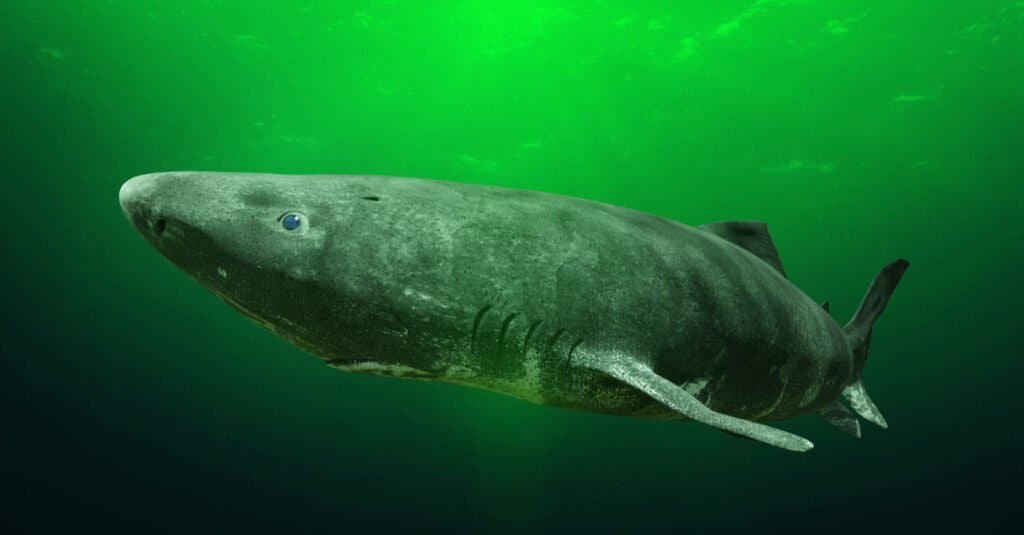
Greenland sharks are believed to live for 250-500 years.
©Dotted Yeti/Shutterstock.com
Recently, an enormous black shark with sky-blue eyes appeared near a researcher’s boat off the coast of Belize. Much to the researchers’ shock, they’d discovered a Greenland shark in Caribbean waters that could very well be hundreds of years old. This discovery is shocking because of the shark’s location since these sharks usually live in the frigid Arctic Ocean. Yet the Greenland shark isn’t a rare species. On the contrary, it’s one of the oldest living organisms in the world.
Researchers believe that Greenland sharks live for 250-500 years. That’s impressive for an animal! Unfortunately, there’s no way to tell a shark’s exact age, but sharks have growth rings on their spines that indicate how long they probably lived. Plus, a carbon or radiocarbon dating method also measures the amount of carbon-14 in the eyes of Greenland sharks to help determine their age.
12. The Bowhead Whale
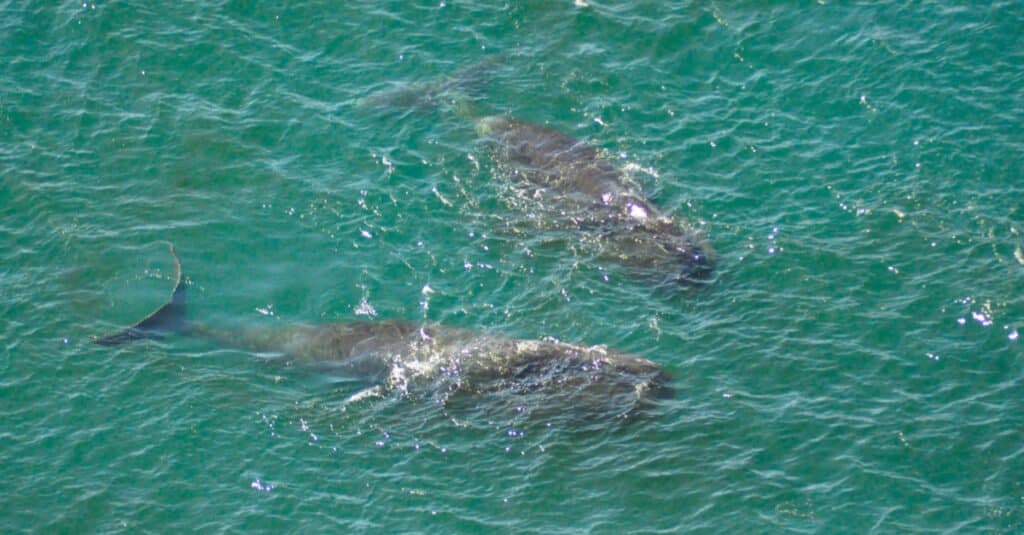
Some
bowhead whale
individuals are thought to be over 200 years old.
©Vladimir Chebanov/Shutterstock.com
This whale species is one of the longest-living mammals on Earth, with some individuals thought to be over 200 years old. Bowhead whales live in the cold Arctic waters off Alaska, Canada, and Greenland, and they can grow over 16 feet long. In addition, these whales have massive heads and more blubber (fat) in their bodies than any other whale. No wonder they survive so long in the frigid sea!
These giants of the sea live in deep waters where their thick layer of fat helps keep them warm under pressure. Additionally, they rarely face threats from predators and have a diet mainly composed of small fish and plankton.
How do researchers know the age of the oldest bowhead whales? By discovering stone harpoon tips inside whales, used more than 100 years ago.
13. The Sea Forest of Neptune Grass
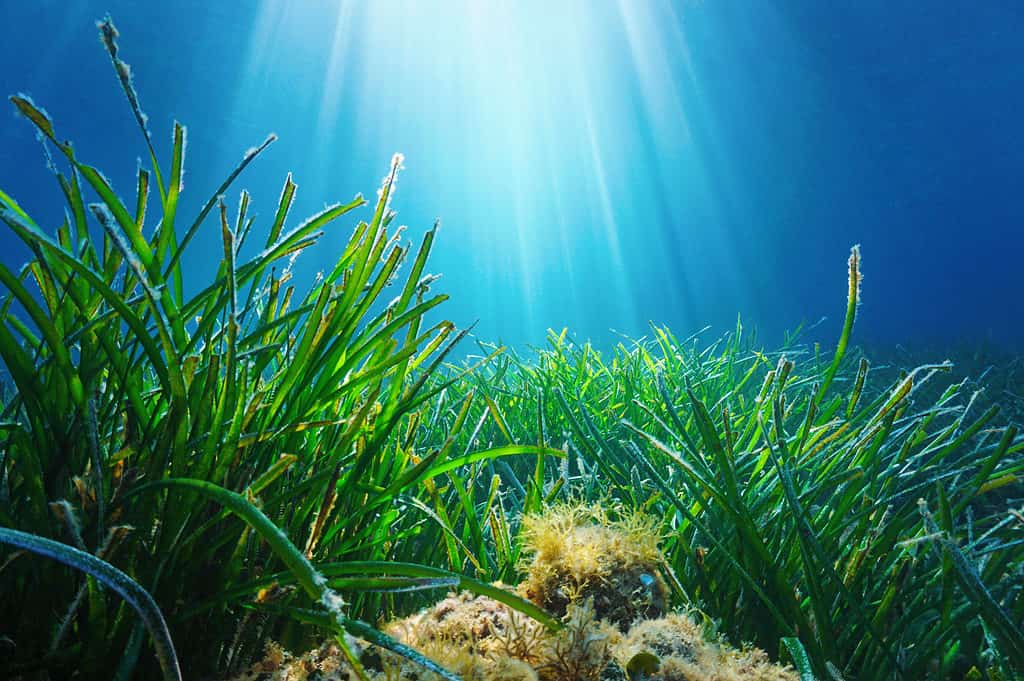
Neptune grass has ribbon-like green leaves that are broad and flat.
©Damsea/Shutterstock.com
An incredible forest of seagrass near Spain has been around for up to 100,000 years in the Mediterranean Sea. Neptune grass grows up to 2 feet tall. It is an integral part of its ecosystem, providing shelter for various marine life, including fish and crabs. This ancient species usually grows in shallow waters but can survive in depths of up to 3-115 feet.
Neptune grass has ribbon-like green leaves that are broad and flat. The many meadows of Neptune grass shelter hundreds of different organisms, including algae, fish, urchins, and turtles.
14. The Deep Sea Coral of Hawaii
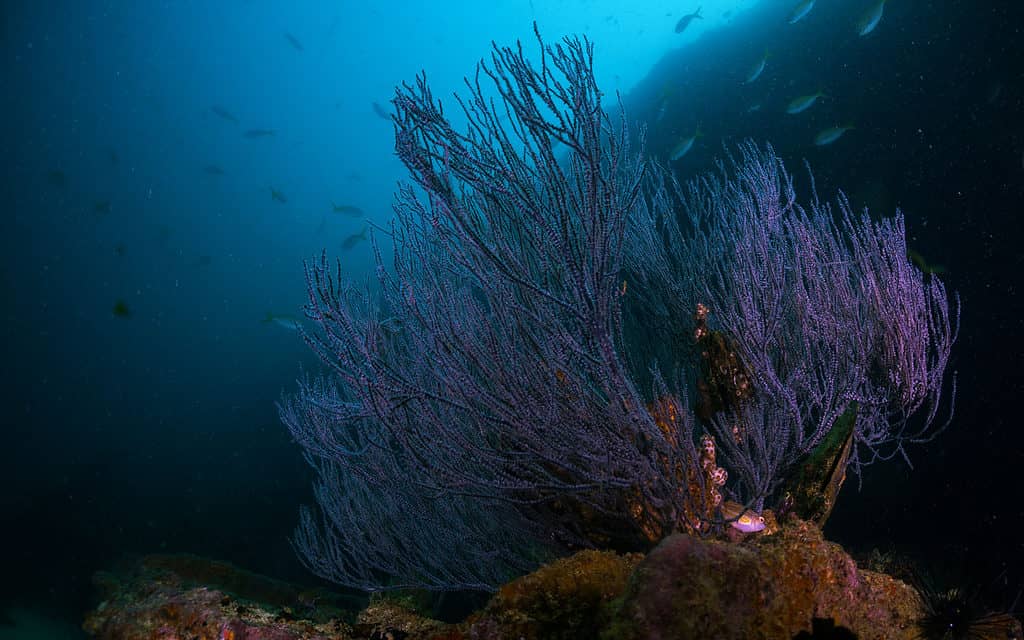
Black coral is an important part of Hawaii’s reef ecosystem.
©Bangtalay/Shutterstock.com
Antipatharians are deep-sea black coral living off the coast of Hawaii, and they’re over 4,000 years old! However, it’s important to note that black coral reefs higher up are not as old as those living at depths of 1,000-10,000 feet. Based on radiocarbon dating methods, the deep sea variety has been around for centuries.
Also called thorn corals, these deep-sea corals are shaped like trees and have incredibly long branches that can grow up to 10 feet or more! The polyps on their branches determine their color, so black coral isn’t always black. Sometimes these antipatharians appear orange, yellow, white, or green.
Antipatharians are slow growers and can survive the harsh, deep-sea environment by catching food from passing currents or absorbing dissolved organic matter. They also dine on algae that dares grow on this coral’s surface.
Black coral is an important part of Hawaii’s reef ecosystem, providing habitat for various marine species and filtering out sediment from the ocean, which helps keep it clean. Conservation efforts are underway to protect this ancient species and ensure its survival.
The Oldest Living Organisms Need Our Protection
These are just some of the fantastic and ancient creatures around the world today, each with unique attributes that allow them to live for centuries. These organisms give us a glimpse into our planet’s past and remind us of the tremendous power of nature. However, it’s dangerous to assume that these creatures can survive anything. Without essential conservation efforts to protect the oldest living organisms in the world, they could be lost forever.
Summary of the Oldest Living Organisms in the World
| Rank | Organism | Age |
|---|---|---|
| 1 | Immortal Jellyfish | Possibly eternal |
| 2 | Volcano Sponge | 15,000 years old |
| 3 | Ancient Bristlecone Pine Tree | 5,000 years old |
| 4 | Alerce Tree | 3,600 years old |
| 5 | Cushion Plant | 3,000 years old |
| 6 | Giant Sequoia Tree | 3,200 years old |
| 7 | Olive Tree of Vouves | 2,000-4,000 years old |
| 8 | African Baobab Tree | 1,500-2,000 years old |
| 9 | Thousand-Year Rose | 1,200 years Old |
| 10 | Ocean Quahog | 400-500 years old |
| 11 | Greenland Shark | 250-500 years old |
| 12 | Bowhead Whale | 200+ years old |
| 13 | Sea Forest of Neptune Grass | 100,000 years old |
| 14 | Deep Sea Coral of Hawaii | 4,000+ years old |
The photo featured at the top of this post is © Dotted Yeti/Shutterstock.com
Sources
- Atlas Obscura, Available here: https://www.atlasobscura.com/places/volcano-sponge-mcmurdo-sound
- Lawrence Livermore National Laboratory, Available here: https://www.llnl.gov/news/deep-sea-corals-may-be-oldest-living-marine-organism#:~:text=At%20more%20than%204%2C000%20years,skeletal%2Daccreting%20marine%20organism%20known.
- Fire Effects Information System, Available here: https://www.fs.usda.gov/database/feis/plants/tree/pinlon/all.html
- National Museum of Natural History, Available here: https://nmnh.typepad.com/no_bones/2016/04/spotlight-on-antipatharians-black-corals.html
Thank you for reading! Have some feedback for us? Contact the AZ Animals editorial team.






